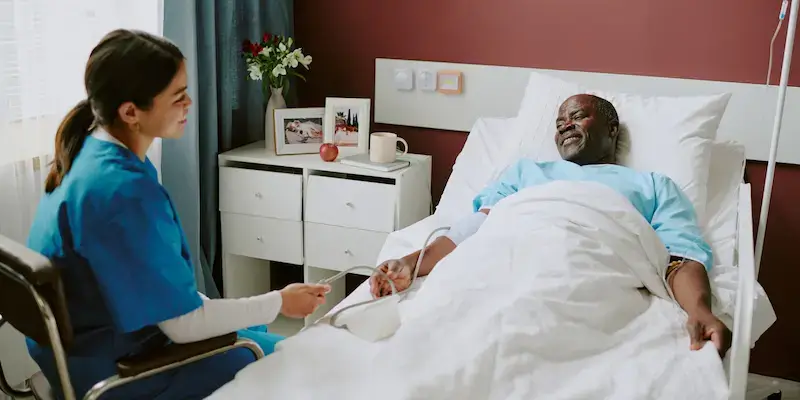Home >
DIEP flap reconstruction
Get rapid access to our leading specialists.
A Deep Inferior Epigastric Artery Perforator (DIEP) flap reconstruction is a type of breast reconstruction surgery where fat and tissue from the lower abdominal area are used to create a new breast.
Learn more about DIEP flap reconstructions at King Edward VII’s Hospital
No muscle is removed during this procedure.
Why would I need a DIEP flap reconstruction?
Having breast reconstruction is a personal choice and not all women choose to have one after undergoing a mastectomy.
Some women find that having a breast reconstruction surgery has a positive impact on their confidence, but this is completely dependent on the individual.
Because no muscle mass is removed during a DIEP flap reconstruction, it allows those who undertake it to preserve abdominal muscle strength.
What symptoms does a DIEP flap reconstruction address?
A DIEP flap reconstruction surgery doesn’t address any symptoms specifically, but rather is done to re-create the breast that was removed during a mastectomy.
When should you speak to your specialist about a DIEP flap reconstruction?
If you have undergone or are about to undergo a mastectomy and you think you would be interested in having breast reconstruction surgery, you should speak to your specialist to see if a DIEP flap reconstruction could be a viable option for you.
How is a DIEP flap reconstruction performed?
A DIEP flap reconstruction can take up to 8 hours and it is performed while you are under a general anaesthetic.
During the procedure, the surgeon will make an incision into your abdomen and will remove skin, fat and blood vessels. They will then use what they have removed to re-create your breast.
The incisions will then be closed with stitches.
What is the recovery for a DIEP flap reconstruction?
The recovery from a DIEP flap reconstruction can depend on a variety of factors, and you should discuss this with your specialist.
After your procedure, you will likely need to remain in hospital for 5-7 days.
You will have incision sites on your breasts and abdominal area, which can be painful. You can speak to your specialist about how best to manage your pain.
You should avoid strenuous activities and sexual intercourse for 6-8 weeks after your DIEP flap reconstruction. It’s also important to note that it can take up to a year before your tissue has fully healed and your scars have faded.
You and your specialist will discuss your plan for recovery and can give you more specific information about what you can expect afterwards prior to your DIEP flap reconstruction.
Are there any risks/complications associated with a DIEP flap reconstruction?
As with any medical procedure, it is possible for risks or complications to arise. It is best that you speak with your specialist about how best to avoid any adverse reactions.
Some complications that have been associated with a DIEP flap reconstruction include:
- Fat necrosis
- Necrosis
- Hernias
How can I prepare for a DIEP flap reconstruction?
Before you undergo a DIEP flap reconstruction, you should discuss any questions you have about the procedure or its recovery with your specialist.
Prior to your procedure, you will undergo a scan of your blood vessels to ensure that the blood supply in your abdomen is adequate.
Your specialist will advise you of any specific preparations that you should make in advance of your DIEP flap reconstruction.
Are there alternatives for a DIEP flap reconstruction?
Not all women choose to have breast reconstruction surgery after having a mastectomy, and instead might wear a prosthetic breast (or breasts) or they might choose not to wear one entirely.
This is a very personal decision that is completely dependent on the individual.
If you decide that you would like to have breast reconstruction surgery, there are other types of reconstruction that you might consider, including:
- TRAM flap – using a flap from your abdomen
- Latissimus dorsi flap – using a flap from your back
- TMG or TUG – using skin, fat and muscle from the thigh
- SGAP or IGAP – using skin and fat from the buttock
You and your specialist will determine what the best option is for you.
Call 020 3504 4605 or fill in your details below to make an enquiry
Need further help or advice?
Contact our team for enquiries or information.
If you need to contact us in any other way, please go to

